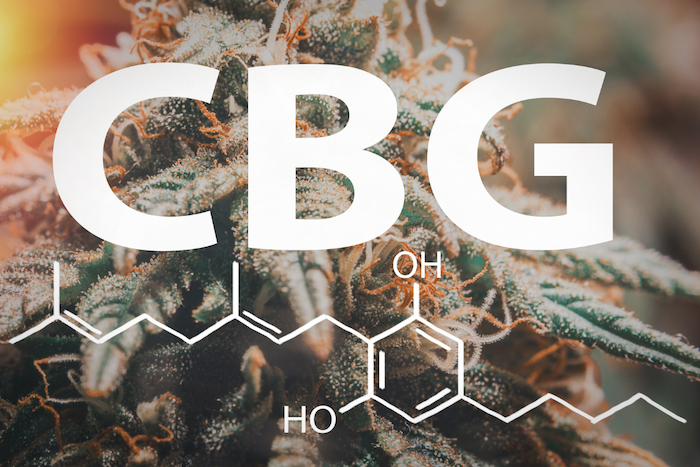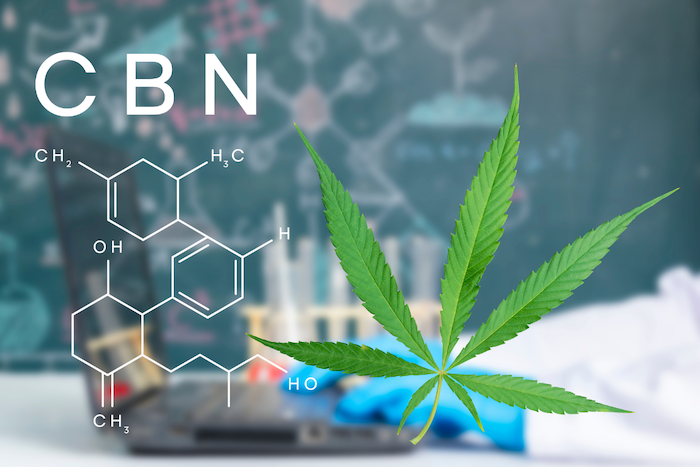 The CBD market is booming, and our understanding of the functional hemp plant is growing with it. There are so many factors to consider when it comes to supplementing with CBD products, and it can feel a little overwhelming. You may have noticed that you aren’t just seeing ‘CBD’ anymore, but now, a variation of letters, like CBG and CBN.
The CBD market is booming, and our understanding of the functional hemp plant is growing with it. There are so many factors to consider when it comes to supplementing with CBD products, and it can feel a little overwhelming. You may have noticed that you aren’t just seeing ‘CBD’ anymore, but now, a variation of letters, like CBG and CBN.
What do these different letters mean?
Are they still CBD?
Do they have different benefits?
We know, we know. So many questions, so little time. Wait. We actually have lots of time. Well, then, let’s get to answering these!
When it comes to all the CBsomethings, think about it like this…
Turmeric is made up of hundreds of different compounds, such as curcumin. Many of these compounds have yet to be studied, and researchers are still trying to understand how they may benefit the human body.
The cannabis plant is no different! There are nearly a hundred unique cannabinoids in cannabis, and so far, only a few of them have been explored.
In this article, we will explore some of these unique cannabinoids and what we have learned about them from the research available. Let’s review CBD and go into some more unfamiliar cannabinoids, like CBG and CBN.
CBD (cannabidiol)
CBD, or cannabidiol, is one of the few major compounds found in cannabis, along with THC (tetrahydrocannabinol). While THC is the psychoactive component of cannabis that results in the ‘high’ feeling, CBD is non-psychoactive.
All cannabinoids are processed in the human body by binding to cannabinoid receptors, which are part of the endocannabinoid system (ECS). There are two main receptors:
- – CB1 receptors are found in the brain and central nervous system and are thought to be involved in mood, thought, emotion, pain, and movement. This receptor is usually looked at more closely in relation to the potential therapeutic effects of CBD.
- – CB2 receptors are found throughout the immune system. These receptors may be more closely linked to inflammation. [1]
One CBD product has been approved by the FDA for medicinal use in the management of epilepsy. However, the use of CBD has expanded to the general public for the management of anxiety, sleep, pain management, depression, and more.
Some research has found that CBD supplementation was associated with decreased cortisol, the hormone secreted by the body under stress. Cortisol is known to influence our metabolism, sleep cycle, and immune system, which means that this is one possible way that CBD influences our health. [2]
Other studies have found that CBD supplementation decreases pro-inflammatory molecules that circulate in the body after injury, as well as molecules that are associated with chronic pain. [3, 4]
While the use of CBD has become popularized in recent years, less is known about some of the other minor cannabinoids found in cannabis plants.
Let’s explore another major compound of cannabis, cannabigerol
 CBG (cannabigerol)
CBG (cannabigerol)
CBG is another lesser-known compound found in cannabis. It is known as a minor cannabinoid, as it usually makes up less than 1% of the components in cannabis plants. But that doesn’t make it any less important or beneficial. Like CBD, it is non-psychoactive and has some powerful effects on our health.
Studies on CBG have found some amazing results. For example, CBG may act as an antibiotic against strains of MRSA, offer anti-inflammatory effects, inhibit the growth of cancer cells, offer improvements in the symptoms of inflammatory bowel disease, and may be protective against neurological conditions like Huntington’s and Parkinson’s disease. [8, 9, 10, 11]
Outside of that, it’s been popularized as a natural energy booster and cognition enhancer, and early research is revealing why. For example, in one study, CBG was found to improve task performance in rats. [16]
It can also boost feelings of happiness. Through supporting the ECS, CBG interacts with key receptors and increases important endocannabinoids like anandamide, a brain chemical responsible for mood stability and feelings of happiness. CBG has been shown to have a positive impact on neurodegenerative diseases and mood disorders, including depression. [17, 18]
If that wasn’t enough, it can also boost brain function. Research into CBG has shown that not only can it help neurons reach farther and communicate faster, but it may also contribute to neuro regeneration – the creation of new brain cells. [19, 20]
What’s most amazing is that this research is still in its early stages, and we’re already making these incredible discoveries.
While CBG can give you a boost of energy, let’s look at another lesser-known cannabinoid with a bit of the opposite effect.
 CBN (cannabinol)
CBN (cannabinol)
Like CBG, cannabinol (or CBN) is a minor cannabinoid. You can get CBN isolated as a tincture. However, it is naturally occurring in older cannabis plants. When THC is exposed to oxygen over time, it produces CBN! Despite the fact that it comes from THC, CBN, like the others, is not a psychoactive compound. But, it can very much help you relax.
CBN has been popularized as a sleep aid and for a good reason. According to research, CBD can act as a natural sedative, helping you to fall asleep faster. [21]
It’s also been shown to reduce pain. Over 20% of Americans deal with chronic pain on a daily basis, which can greatly disrupt sleep and hinder one’s ability to relax. Thankfully, CBN has been shown to reduce pain. Moreover, in one study, CBN mixed with CBD had a better effect on pain than just one alone. [22, 23]
Another hurdle for those looking to relax is inflammation. Inflammation is a precursor to many health issues, including uncomfortable conditions such as arthritis, which can cause both mental and physical stress throughout the body. But, according to research, CBN can help calm the inflammation in your body, which, in turn, can calm you. [24]
And if that wasn’t enough, research has shown that CBN can protect the brain from the onset of certain neurological disorders. Additionally, it can protect brain cells, reducing the risk of cognitive decline. [25, 26]
So let’s review…
CBD
- Major or Minor Cannabinoid?
- MAJOR
- Psychoactive?
- NO
- Potential Benefits?
- Reduction of stress, anxiety, and depression
- Improved sleep
- Chronic pain management
CBG
- Major or Minor Cannabinoid?
- MINOR
- Psychoactive?
- NO
- Potential Benefits?
- Antibacterial effects
- Anti-inflammatory
- Inhibits the growth of cancer cells
- Improvement in inflammatory bowel diseases, like Celiac and Crohn’s
- Improvements in neurological diseases, like Huntington’s and Parkinson’s disease
- Boosts energy
- Enhances cognition
- Promotes feelings of happiness
- Protects against cognitive decline
CBN
- Major or Minor Cannabinoid?
- MINOR
- Psychoactive?
- NO
- Potential Benefits?
- Decreases inflammation
- Improvement in glaucoma
- Antibacterial effects against MRSA
- Neurological protection
- Sleep aid
- Reduces pain
- Protects the brain
The spectrum of cannabinoid compounds is incredibly interesting. But what’s more interesting is what’s called the entourage effect. This is research that shows how taking different types of cannabinoids together enhances the effects of each, proving a powerful synergistic effect.
Citations
- https://www.ncbi.nlm.nih.gov/pmc/articles/PMC5877694/
- https://pubmed.ncbi.nlm.nih.gov/8257923/
- https://www.ncbi.nlm.nih.gov/pmc/articles/PMC3371734/
- https://www.sciencedirect.com/science/article/abs/pii/S0008874918300911
- https://pubmed.ncbi.nlm.nih.gov/25147760/
- https://pubmed.ncbi.nlm.nih.gov/20332000/
- https://pubmed.ncbi.nlm.nih.gov/27094344/
- http://dx.doi.org/10.1021/acsinfecdis.9b00419
- https://pubmed.ncbi.nlm.nih.gov/33562819/
- https://www.ncbi.nlm.nih.gov/pmc/articles/PMC6038810/
- https://www.ncbi.nlm.nih.gov/pmc/articles/PMC4322067/
- https://pubmed.ncbi.nlm.nih.gov/18681481/
- https://pubmed.ncbi.nlm.nih.gov/16183560/
- https://www.ncbi.nlm.nih.gov/pmc/articles/PMC3202504/
- https://pubmed.ncbi.nlm.nih.gov/1221432/
- https://pubmed.ncbi.nlm.nih.gov/25252936/
- https://www.ncbi.nlm.nih.gov/pmc/articles/PMC6021502/
- https://www.mdpi.com/1422-0067/23/14/7929
- https://www.mdpi.com/1424-8247/15/2/117
- https://www.mdpi.com/2223-7747/12/1/193
- https://pubmed.ncbi.nlm.nih.gov/1221432/
- https://www.cdc.gov/mmwr/volumes/72/wr/mm7215a1.htm
- https://pubmed.ncbi.nlm.nih.gov/31158702/
- https://faseb.onlinelibrary.wiley.com/doi/full/10.1096/fj.201600646r
- https://pubmed.ncbi.nlm.nih.gov/16183560/
- https://www.sciencedirect.com/science/article/abs/pii/S0891584922000016
